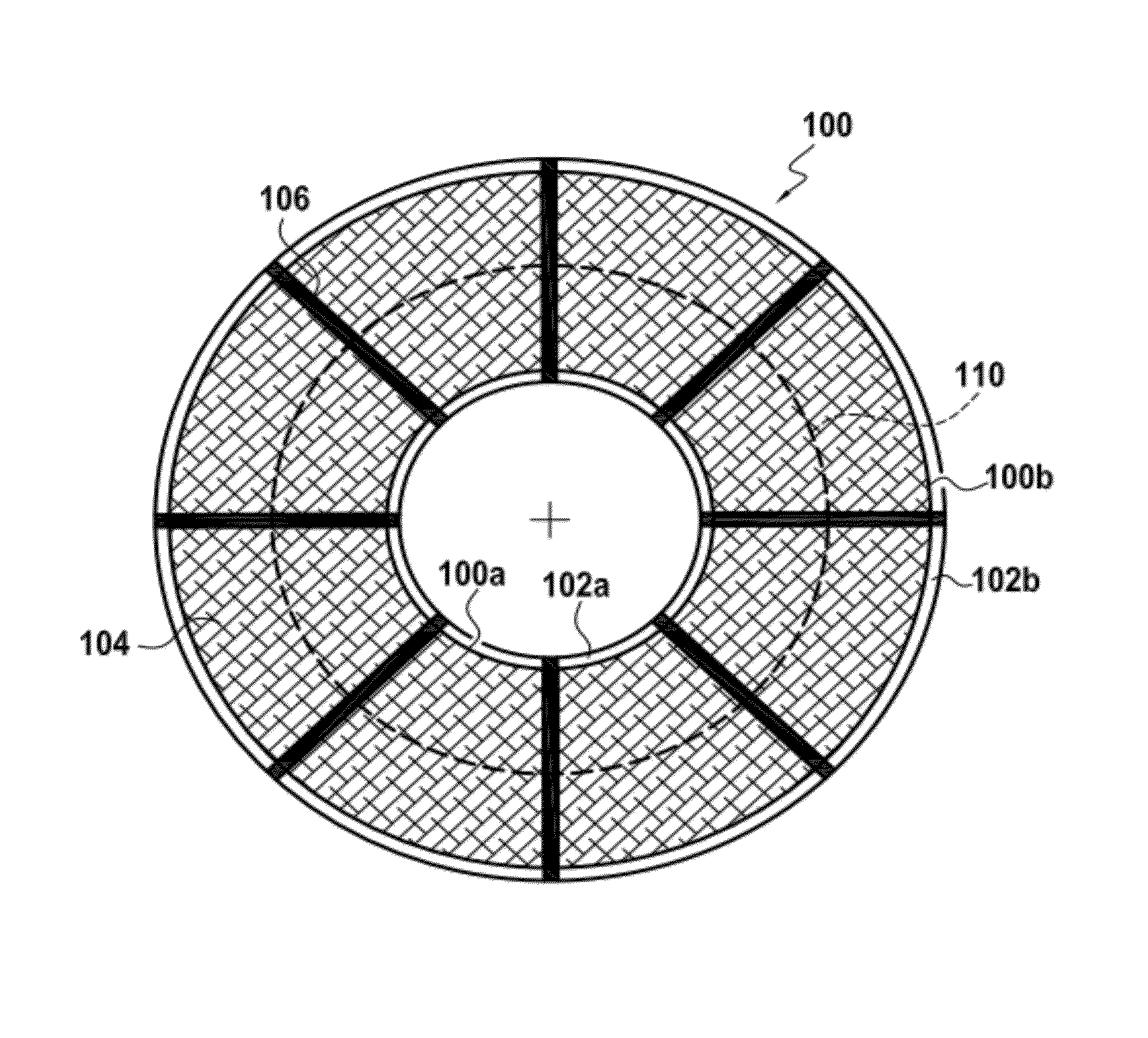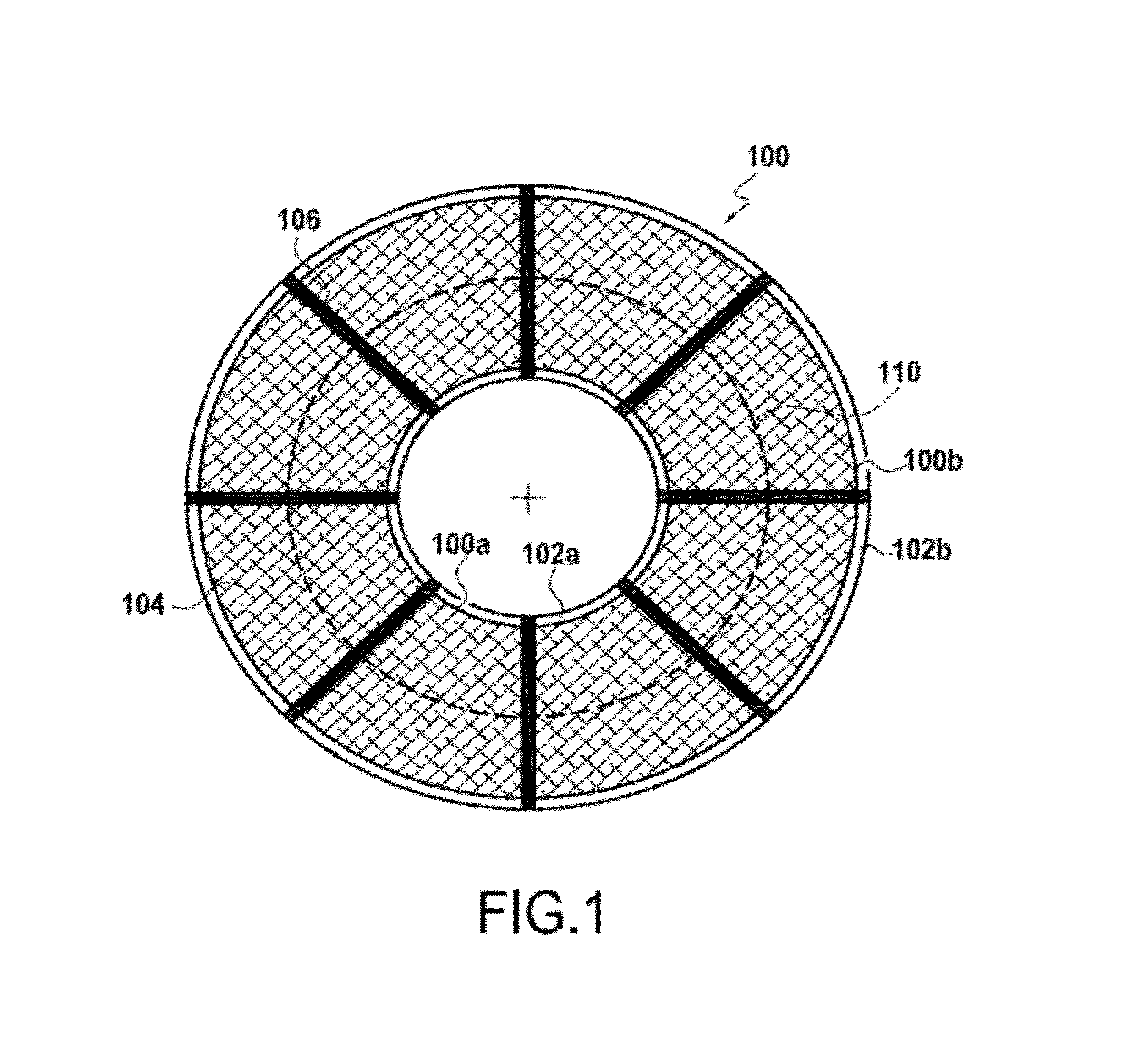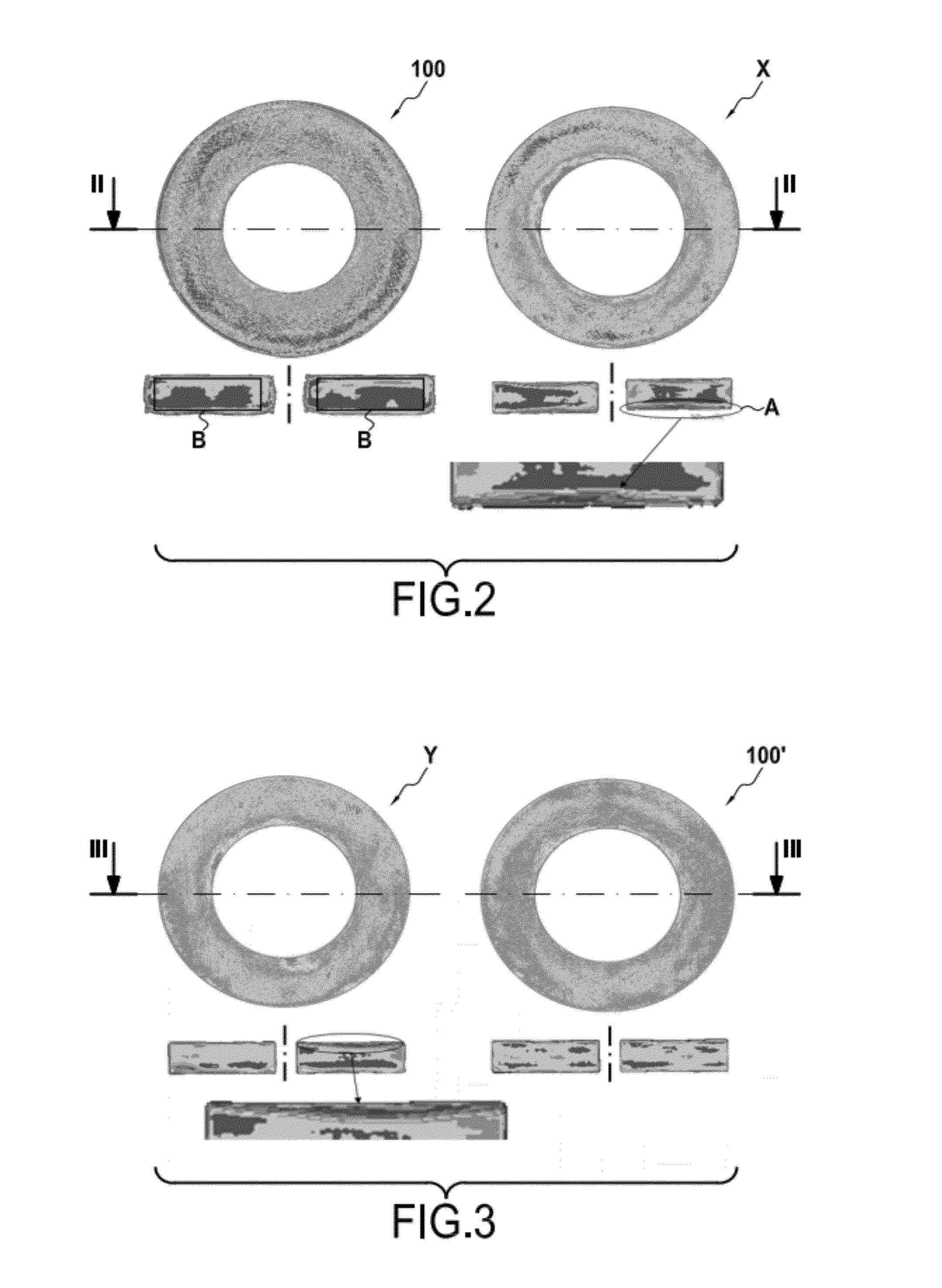Edge densification for film boiling process
a technology of densification and film boiling, which is applied in the direction of solid-state diffusion coating, electric/magnetic/electromagnetic heating, friction lining, etc., can solve the problem of increasing the electric consumption, high overall electric consumption compared to the standard l-cvi process, and rapid blockage of the surface porosity of the preform
- Summary
- Abstract
- Description
- Claims
- Application Information
AI Technical Summary
Benefits of technology
Problems solved by technology
Method used
Image
Examples
Embodiment Construction
[0037]1. Mesh material having high open porosity
[0038]In a conventional film boiling densification process, improvement of densification at the edges (surface or peripheral) compared to the conventional art is a concern. To address this issue according to conventional approaches generally requires a high power level during a film boiling process.
[0039]For example, to density a 20″ carbon brake disk (densification front moved substantially up to the surface of the brake disk) may require more than 70 W / cm2 at the end of the cycle when the part is heated with direct coupling. One way to decrease this power consumption is to physically insulate the preform. However, insulating the preform very often affects homogeneity of the densification. In particular, wrapping a preform with insulation such as carbon felt or a PTFE textile as described in U.S. Pat. Nos. 6,994,886 and 5,981,002 can have a negative impact on the core densification.
[0040]As is generally known, the high thermal gradien...
PUM
| Property | Measurement | Unit |
|---|---|---|
| porosity | aaaaa | aaaaa |
| porosity | aaaaa | aaaaa |
| power | aaaaa | aaaaa |
Abstract
Description
Claims
Application Information
 Login to View More
Login to View More - R&D
- Intellectual Property
- Life Sciences
- Materials
- Tech Scout
- Unparalleled Data Quality
- Higher Quality Content
- 60% Fewer Hallucinations
Browse by: Latest US Patents, China's latest patents, Technical Efficacy Thesaurus, Application Domain, Technology Topic, Popular Technical Reports.
© 2025 PatSnap. All rights reserved.Legal|Privacy policy|Modern Slavery Act Transparency Statement|Sitemap|About US| Contact US: help@patsnap.com



